On 5th October, at Igreja de Nossa Senhora da Consolação e Santos Passos (Guimarães), Joana Palmeirão presented part of her research with St Fortunato!

On 5th October, at Igreja de Nossa Senhora da Consolação e Santos Passos (Guimarães), Joana Palmeirão presented part of her research with St Fortunato!

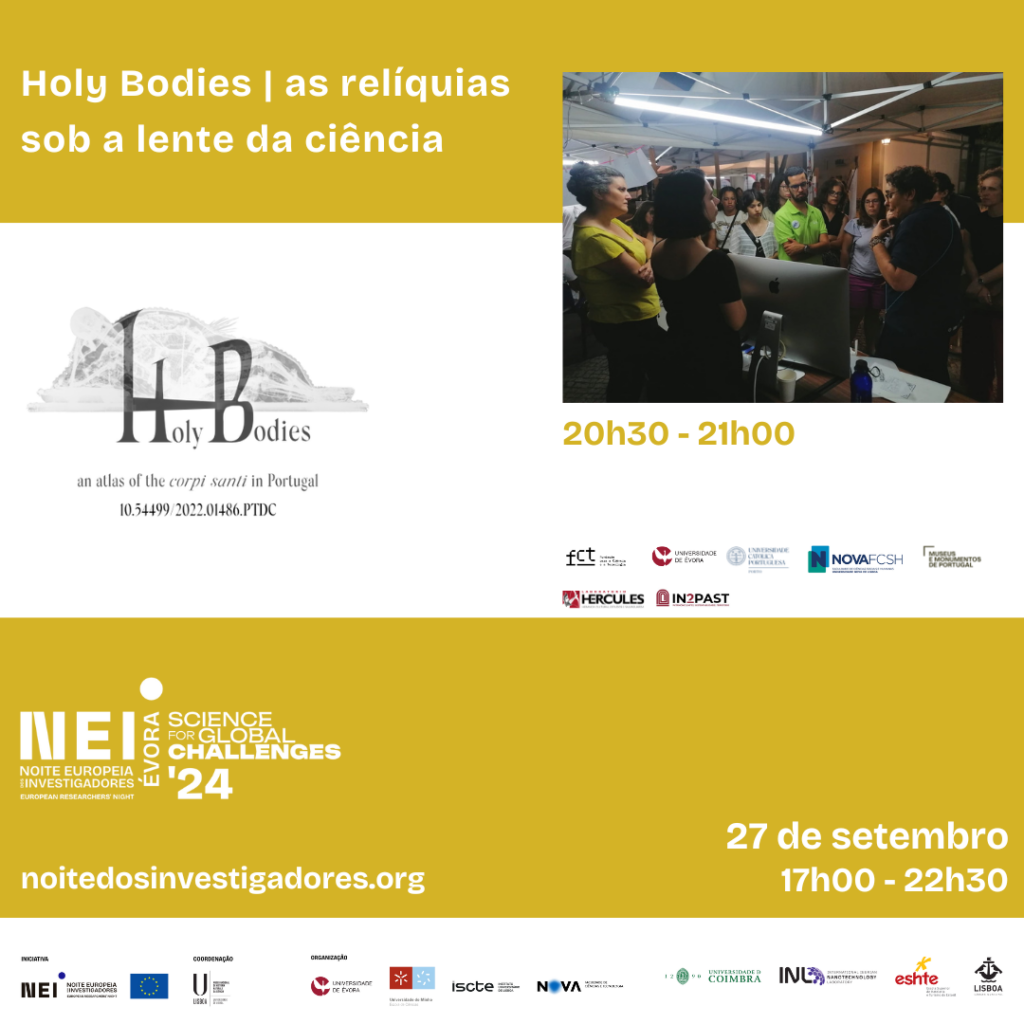
HB took part in the European Researchers’ Night 2024, sharing the fascinating world of corpi santi with a diverse audience. We had the pleasure of engaging with curious young minds, entire families, and researchers from various fields. It was an enriching experience that helped spread awareness about our research on holy bodies.
HB is on!
From 20th-22nd September we will have our short-video included among the activities of the European Heritage 2024 edition.
https://www.patrimoniocultural.gov.pt/eventos2/jep/2024#

We’re excited to be at the InART2024 conference in Oslo this week!
We discussed our research on the materiality and conservation status of the St Vicente’s simulacrum – one of the four martyrs’ simulacra belonging to the Major Seminary of Coimbra (Coimbra, Portugal).
We also presented the study on the simulacra of St Primogénita and St Teodoro, part of the collection held by Santa Casa da Misericórdia de Almada (Portugal). These are particularly intriguing examples of young children’s relics, and they have been the subject of our comprehensive osteological and material analysis.

Last month, our team member, Alexandra Gago da Câmara participated in the prestigious International Conference “The Venice Charter [Re]Framed: New Heritage Challenges”, held at the Faculty of Arts and Humanities, University of Lisbon.
Alexandra’s presentation, “Corpi Santi in Portugal—Devotion and Heritage”, delved into the intersection of devotion and heritage, shedding light on the context of Holy Bodies in Portugal.
Check out more about the conference here:
https://www.letras.ulisboa.pt/pt/agenda/international-conference-the-venice-charter-re-framed-new-heritage-challenges

Meet José Tavares, an MSc student passionately working on HB’s project under the supervision of Professor Eduarda Vieira (UCP) and Professor Teresa Ferreira (UÉ).
Today, he shared an outstanding talk, showcasing his research at the Jornadas de Investigação do Mestrado em Conservação e Restauro de Bens Culturais at Universidade Católica do Porto (CITAR).
His work on St Vitorino, one of the corpi santi held by SCMA, is two-fold: developing novel conservation approaches to safeguard St Vitorino and conducting its analytical characterization.
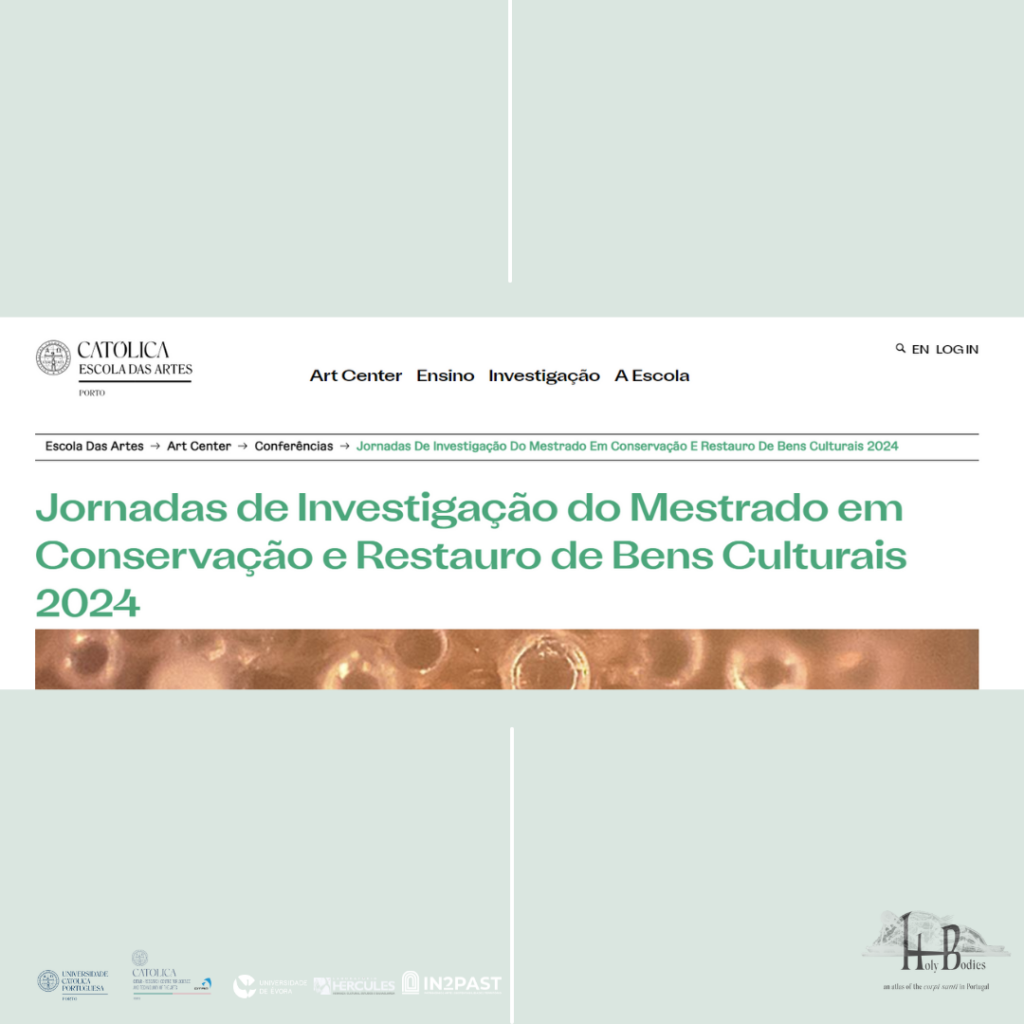

After weeks of intense laboratory work, we are excited to share our latest results!
Today, we present our research on St Clementina and St Simplício martyrs at the 14th Inorganic & Bioinorganic Chemistry Conference (NOVA FCT) #2024ibicc.
Our panel presentation is focused on the analytical characterisation of these simulacra, encompassing radiographic and osteological analyses, as well as the study of textile fibres and decorative motifs adorning the fabrics. Furthermore, we unravel the materials of the multi-layered structure shaping the face of the simulacra by investigating organic materials used as adhesives for the textiles and paper overlaying the skull, beneath the top-gauze layer.
This work is part of the final internship project of Miguel Pires, a Biotechnology BSc student (UÉ) working within the context of the Holy Bodies project.
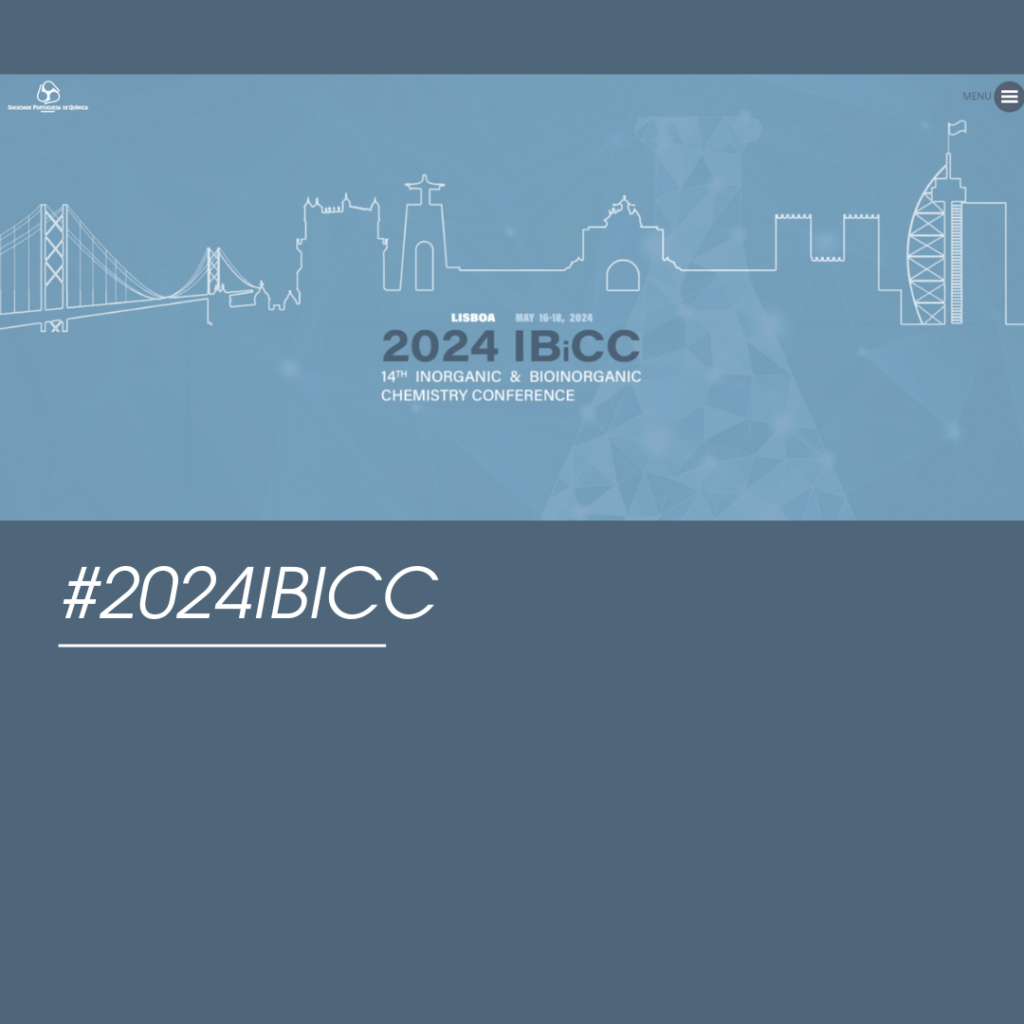
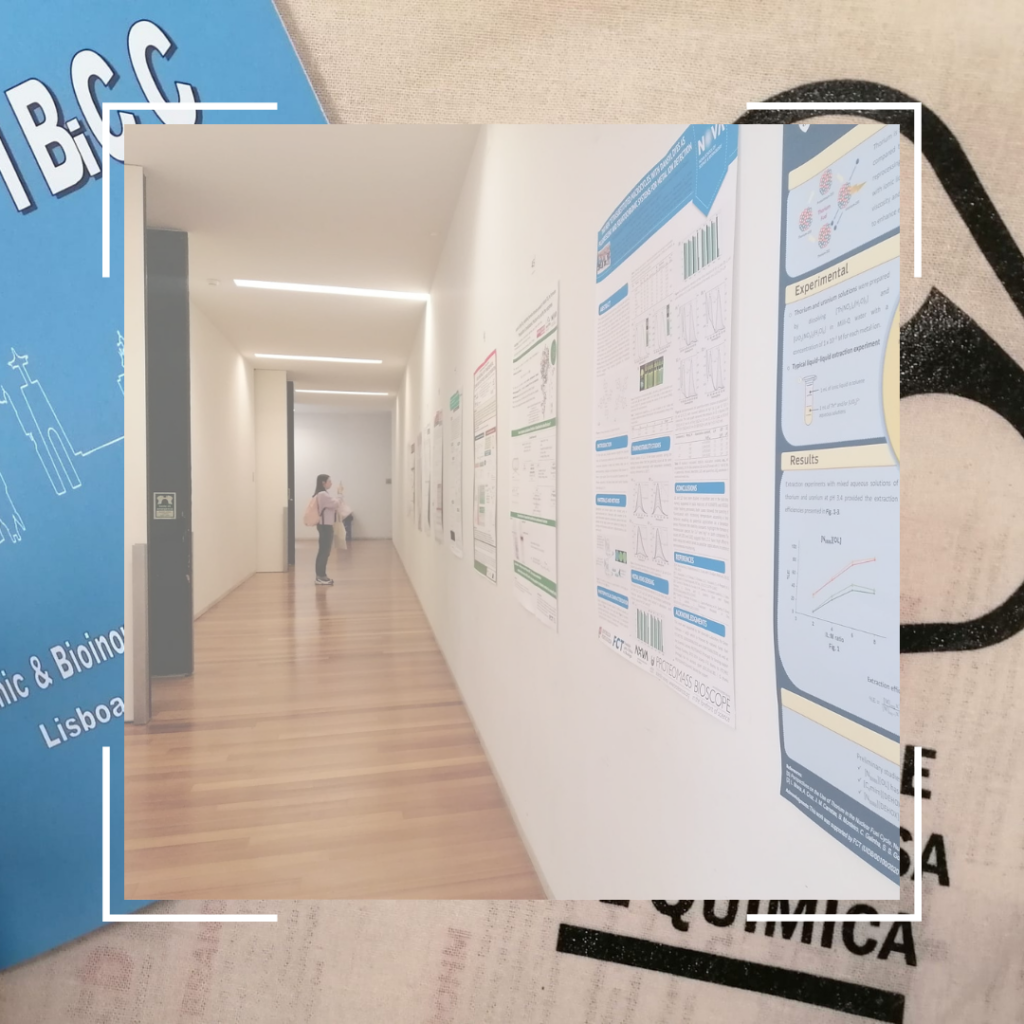
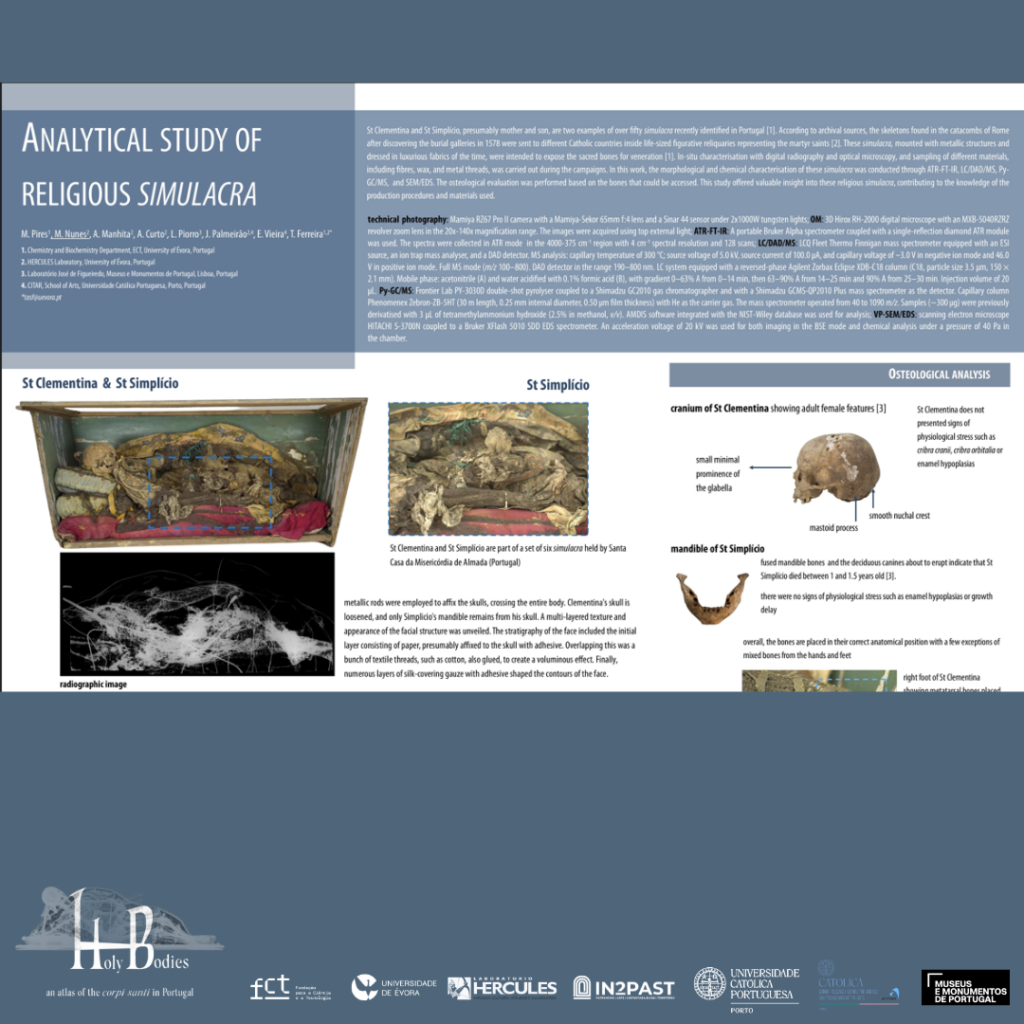
We shared an oral communication, led by the HB’s co-PI, Eduarda Vieira, entitle “Archival and digital preservation of Heritage: the Holy Bodies project. The study of corpi santi in Portugal” during EpoCH2024 edition. It was a great opportunity to share our project with a broad audience.
We welcome the organizing committee for allowing us to participate in this conference and contribute to enhance the art&science subject.

We were fully engaged in science dissemination and communication last week!
HB organized an activity/workshop titled “Sustainability and Non-Pollution: The Importance of Natural Dyes over Synthetic Ones” for the 2024 Science Festival & Open Days UÉ (ECT), which took place at CLAV and was attended by primary and secondary school students.
On Friday, we hosted secondary school students from #Montemoronovo and a group of ERASMUS students from the Canary Islands. We introduced them to the corpi santi through the activity “Sacred Colors: The Clothing of the Corpi Santi from the Catacombs of Rome”, which was held at the HERCULES Laboratory.

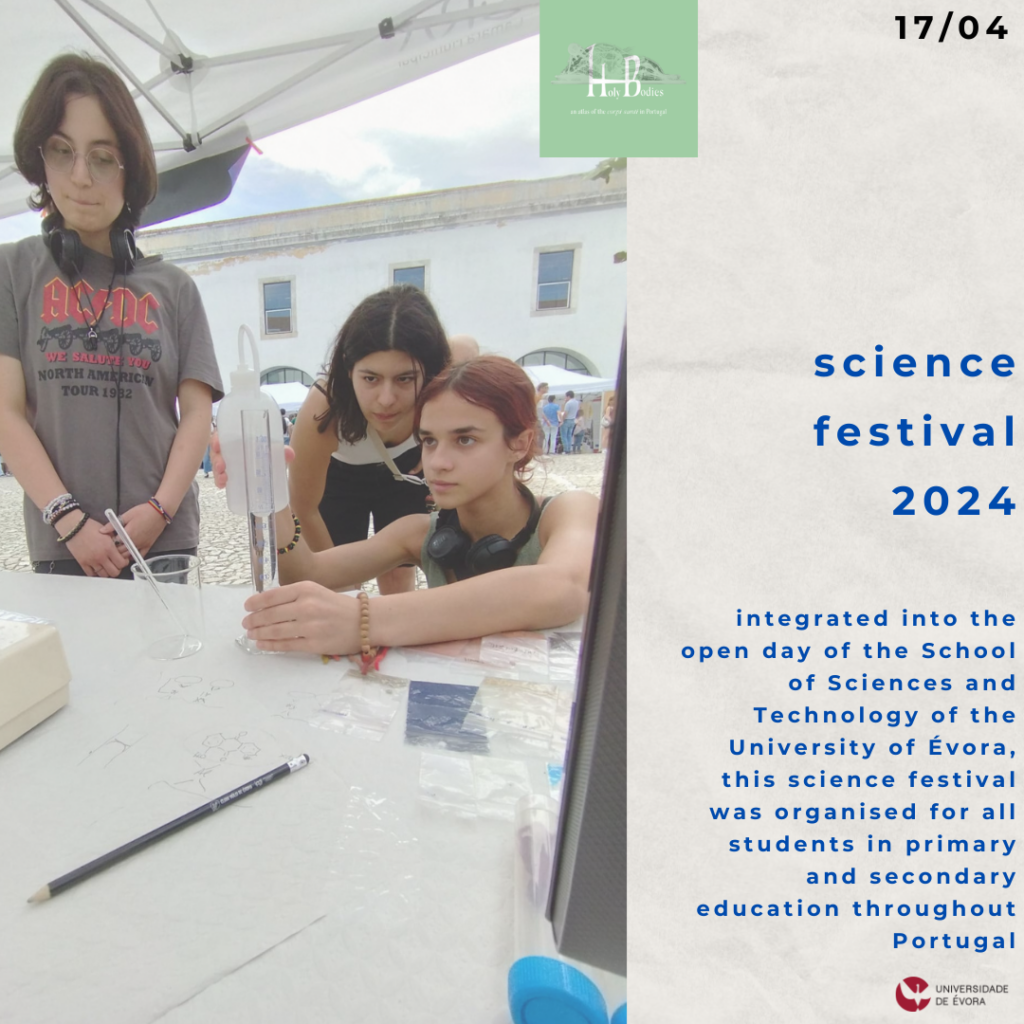
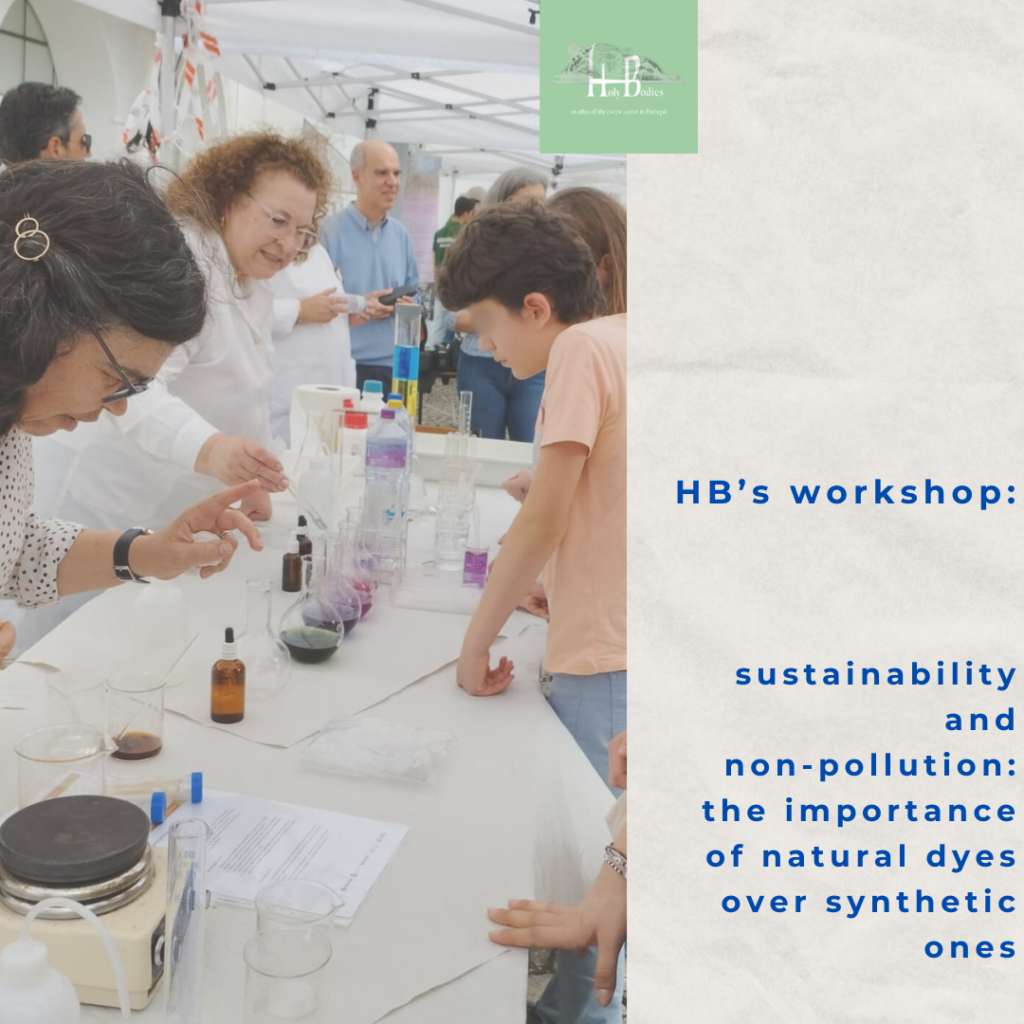

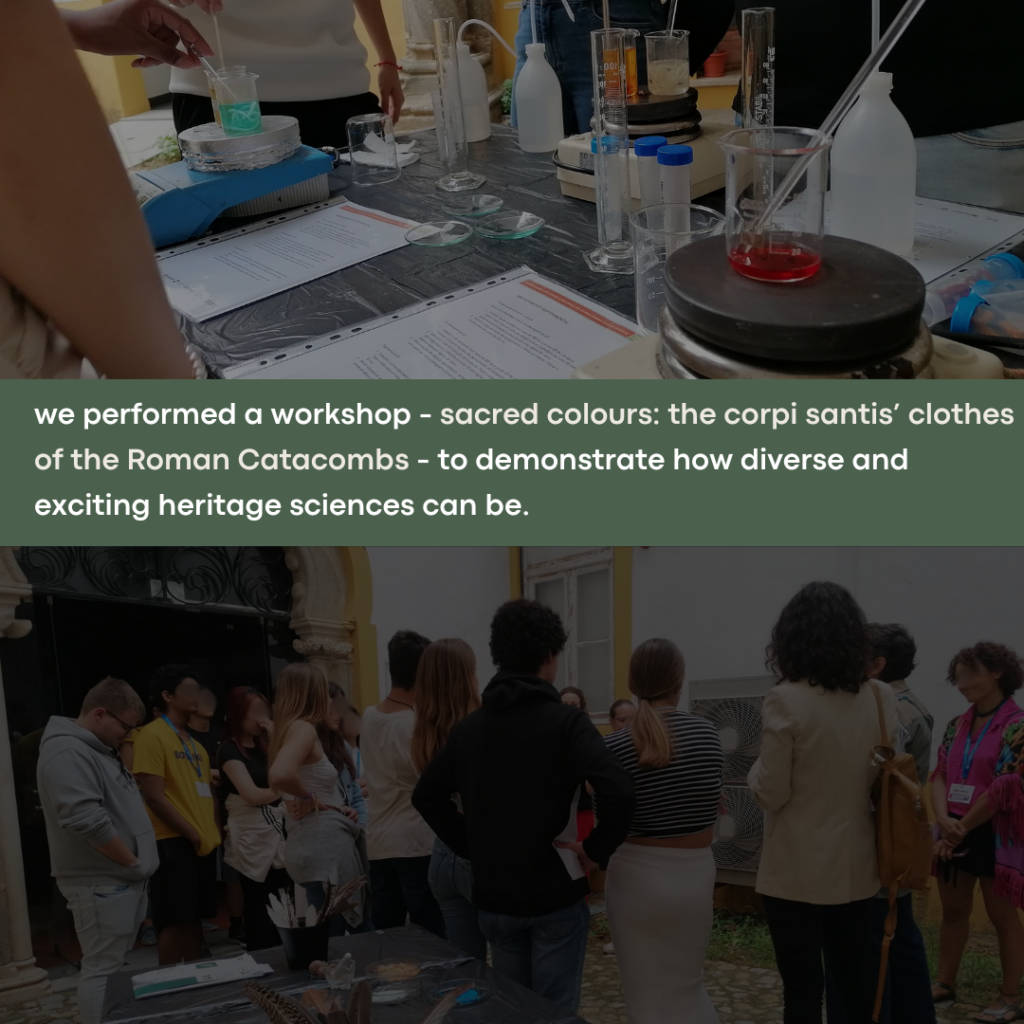
On 21st February, Helena Barranha, architect, professor at IST-UL, and researcher at IHA-NOVA FCSH/IN2PAST, presented the lecture “Virtual Museums – Between Representation and Reinvention of Architectural Space” at the Jorge Araújo Library of Colégio dos Leões, in Évora. Helena Barranha will reflect on the concepts of virtual museums and intangible museography, as well as the opportunities and challenges of digital transformation applied to art and heritage. We invite all those interested in architecture, design, digital art, museography, and heritage to join the discussion.
This lecture was organised within the scope of the Holy Bodies project by the HERCULES Laboratory/IN2PAST, with support from the Department of Architecture – School of Arts and the _ARTERIA_LAB/PIXEL. Holy Bodies (10.54499/2022.01486.PTDC) is a project funded by FCT through national funds.
